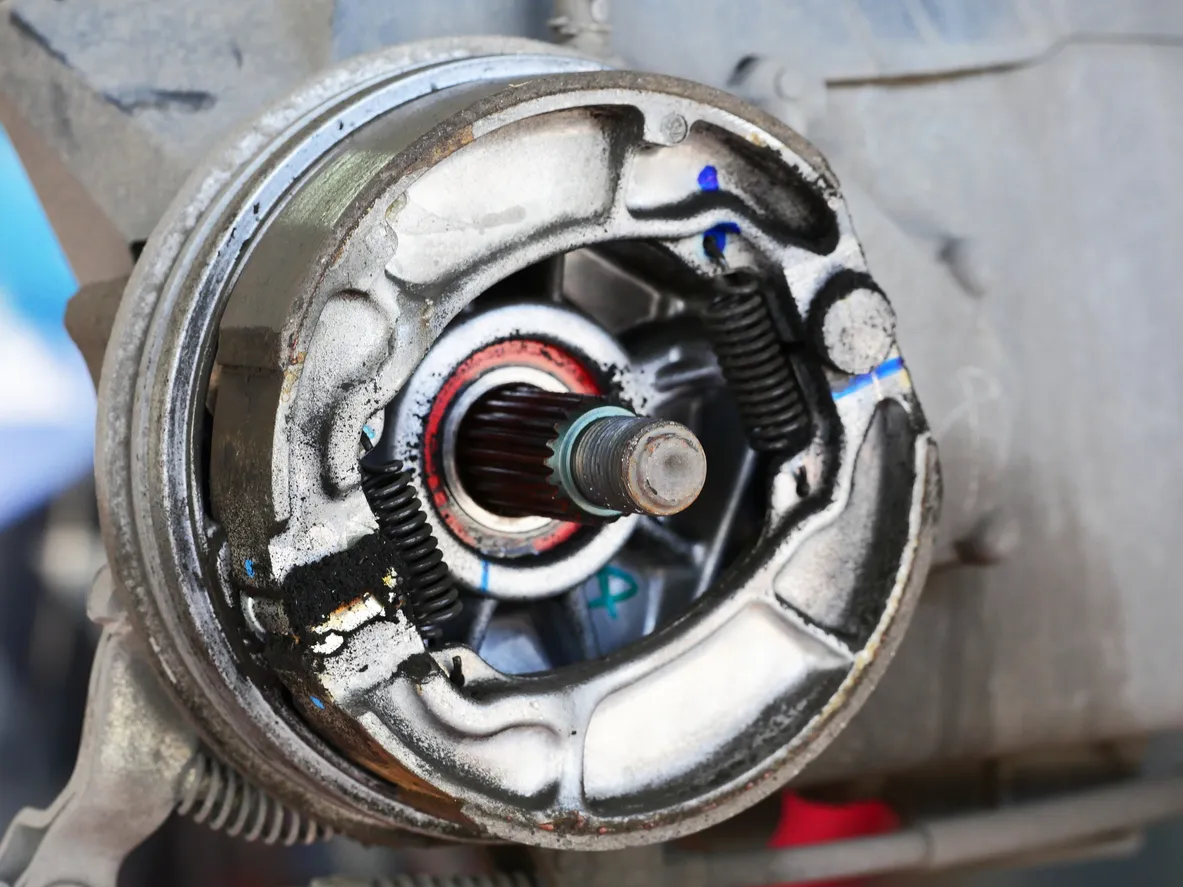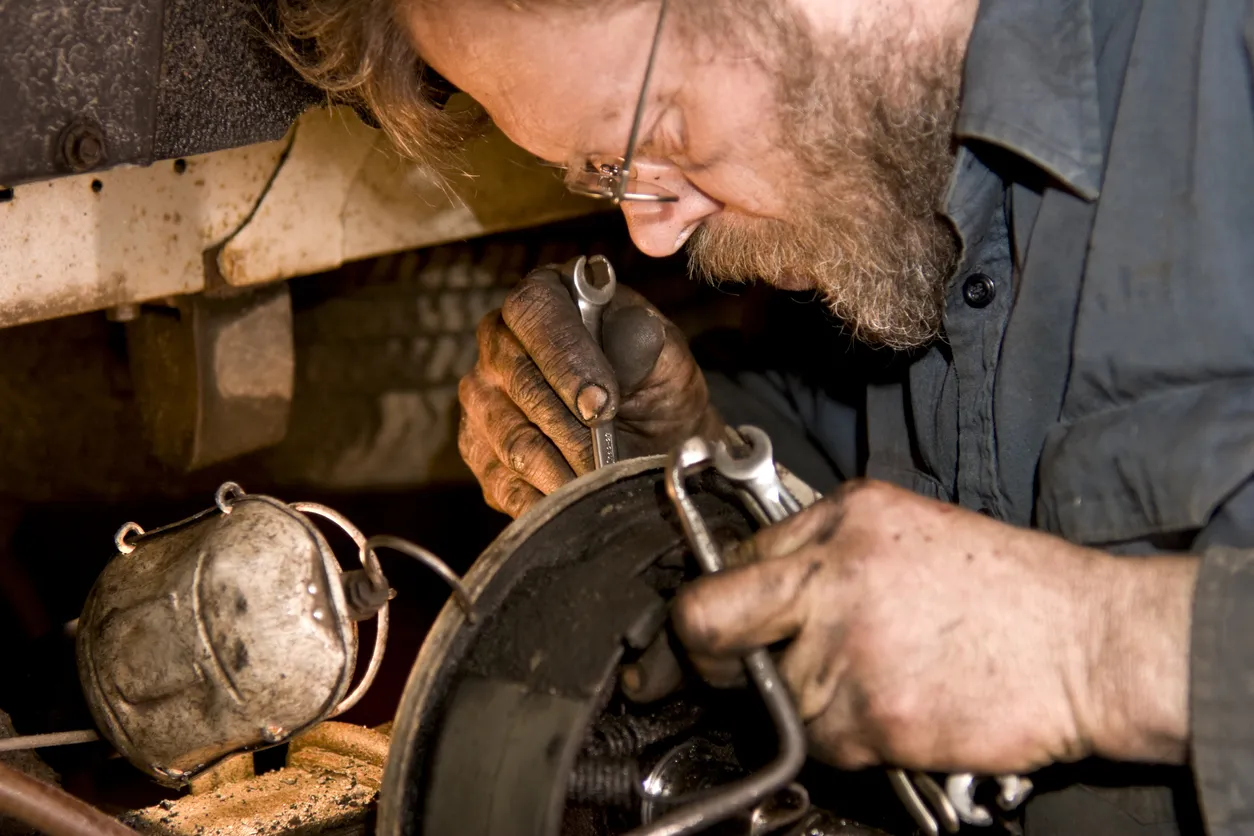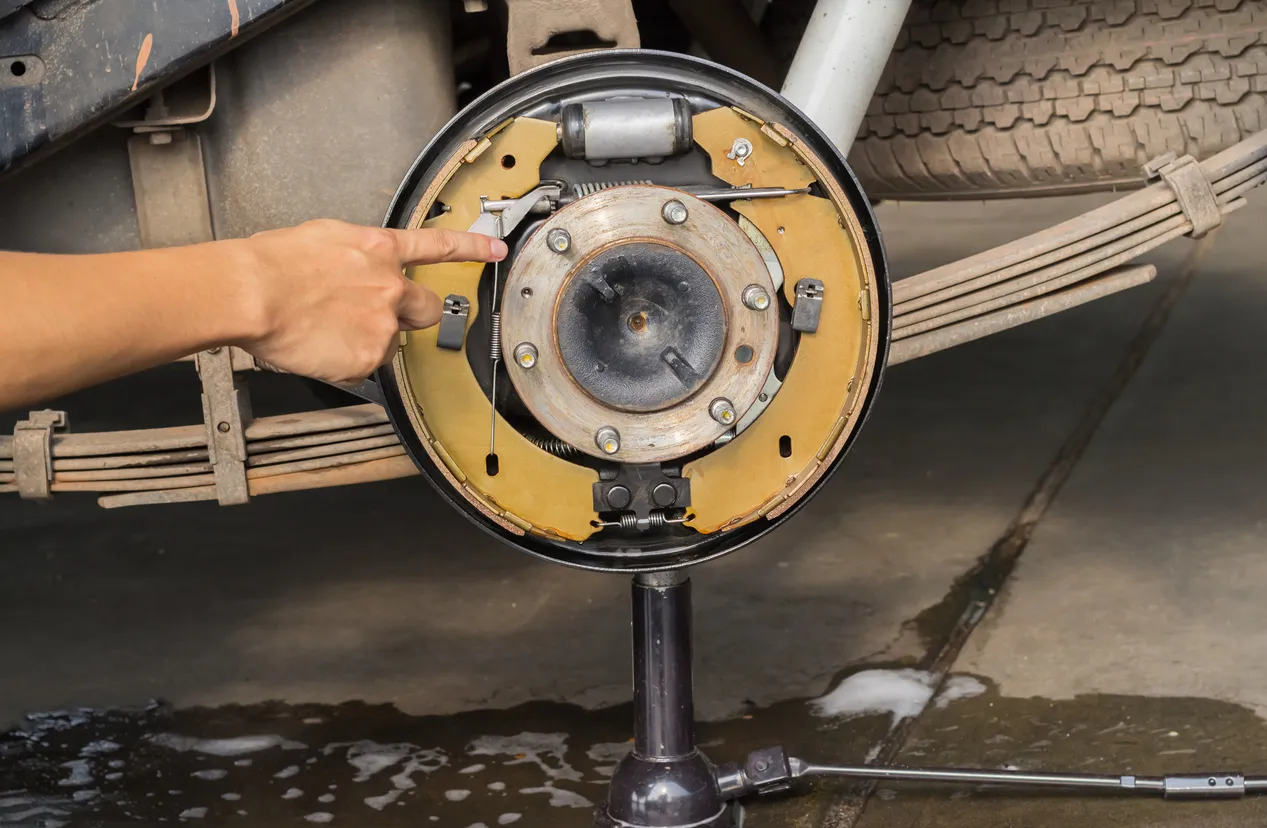Everything to Know about Drum Brakes

Drum brakes are an older brake system style still used on many vehicles today. Unlike the disc brake systems you'll find on most cars and many trucks today, drum brakes are a more enclosed system. Drum brakes are effective at slowing a vehicle. These brake systems offer some excellent real-world benefits compared to disc brakes, making them an optimal solution for large vehicles. If you are considering getting a vehicle equipped with drum brakes and want to know what a brake drum is and how these systems work, take the time to learn the basics, and you'll know what to expect from your drum brake system. All this information will also help you choose vehicles based on a GoodCar Vehicle History Search because you can look at things like maintenance and brake system information with more knowledge.
What Are Drum Brakes?
Drum brakes are a full brake system used on many large trucks and SUVs today. These brake systems rely on internal pressure from a friction material pressed against a spinning metal drum. The smooth drums are made from highly durable materials and can withstand extreme heat and wear for years. Drum brakes are highly reliable and keep out dirt and debris more effectively than disc brakes can. They are often considered more difficult to work on, but many vehicle owners love their drum brakes, and you may, too, once you realize how the system works and all the benefits these brakes can offer you.
How Do Drum Brakes Work

Before you can change a brake drum or make any adjustments to your vehicle's brake system, you need to understand what is a drum brake and how a drum brake work. These questions are simple to answer; every person with drum breaks should understand these basic concepts. When you want to know what drum brakes are, they are a brake system with specialized brake shoes inside metal brake drums. The brake shoes have a special lining that presses on the spinning drums to slow the vehicle.
Brake drums work straightforwardly. The metal drum is attached to the wheels of your vehicle, and these drums spin along with your vehicle wheels. The brake hardware and shoes inside the drums do not rotate with the wheels. As you press the brake pedal while driving, your brake piston presses either of the brake shoes out against the spinning metal drum. The brake shoes generate tremendous friction that slows the spinning drum along with the wheel it is attached to. When you stop pressing the brake pedal, the pressure releases in the piston, and a set of springs move the brake shoes back away from the brake drum to stop the friction so the wheel can turn freely again.
The Benefits of Drum Brakes
Far fewer vehicles rely on drum brakes today than they used to, but having them on your truck, SUV, or another vehicle isn't necessarily bad. As compared to disc brakes, drum brakes can offer greater stopping power and a longer lifespan, and lower production costs. Drum brakes are also easier to repair and more cost-effective to bring back to working condition again.
The Downsides of Drum Brakes
Drum brakes have many powerful advantages, but they also have some downfalls. One real issue with drum brakes is that they suffer from brake fatigue more under long-term braking conditions than disc brakes do, and this means you must press on the pedal harder, and you'll stop more slowly during very intense braking situations. Brake drum systems are also more difficult to work on and require specialized knowledge and tools to replace and repair properly. These two main issues prevent so many automakers from using drum brakes today.
How to Adjust Drum Brakes

Open your drum brakes so you can view the hardware within. Once it's accessible, you are ready to begin your adjustments. Locate the adjuster arm near the bottom of the drum and move the adjuster knob to either apply or release the tension on the brake shoes. You want the shoes to be loose enough for your vehicle's tire to spin around a full revolution before it stops. If it doesn't turn around one full turn, loosen the shoes slightly. If it spins farther than a single turn, you should snug up the shoes using the adjuster.
How Long Do Drum Brakes Last?
Once you know what a drum brake and how the different components work is, you can start to appreciate how reliable and long-lasting these brake kits are. A brake drum can last for between 100,000 and 150,000 miles before it requires replacing. It's important to note that you must replace the brake shoes every 30,000 to 40,000 miles to keep the drums in good condition. Drum brake hardware should also be replaced when you replace the shoes, but the hardware comes with a minimal cost. Overall, maintenance is affordable when working with drum brakes.
How to Change Drum Brakes
Knowing how to replace drum brakes enables you to make quick repairs on a failing brake system. The steps are more complicated than when working with a disc brake system, but they are still possible for most vehicle owners with some mechanical skill and understanding.
Begin by removing the wheel over your brake drum. Now, remove any retaining screws or clips securing the drum in position and slide the drum off. You may need to use a rust penetrant and some force to get the drum off if it's rusted in place. You may also have to loosen the adjuster through the access port on the backing plate to relieve enough pressure on the brake drums to get the drums off.
Carefully remove and replace the brake hardware, shoes, cables, and more. Follow a repair manual or reference to ensure all the parts go on properly. You can also take a reference picture before removing the old components, so you know exactly how to put on the new items.
Knowing how to remove drum brakes isn't enough; you must understand how to install the new hardware, shoes, and drums to fully repair the brake system of your vehicle. Once you understand all those steps, you can keep your brake system in excellent running condition over time.
FREE Vehicle Search
- Accidents
- Problem Checks
- Title Records
- Recalls
- Values
- Specs
-
InfoPay, Inc. (dba GoodCar) is an Approved NMVTIS Data Provider
-
-

















































